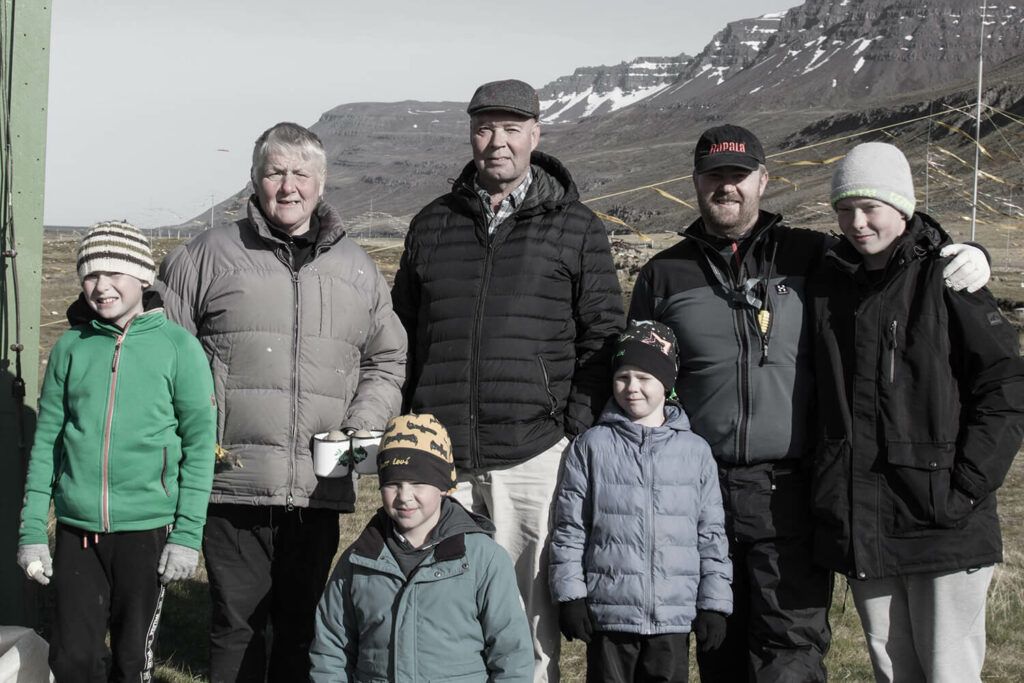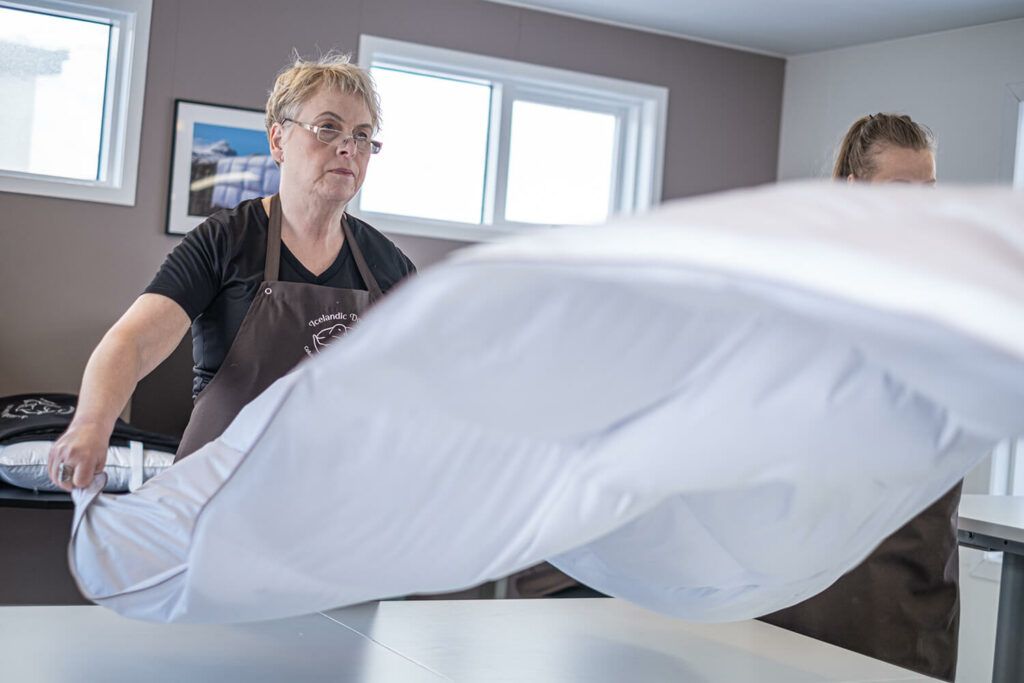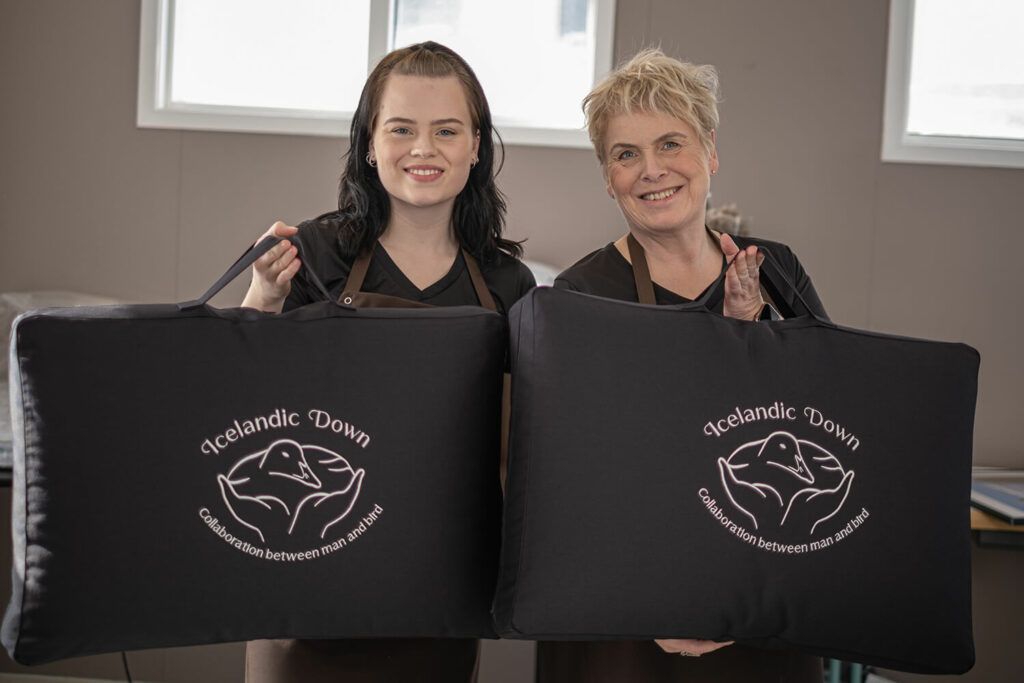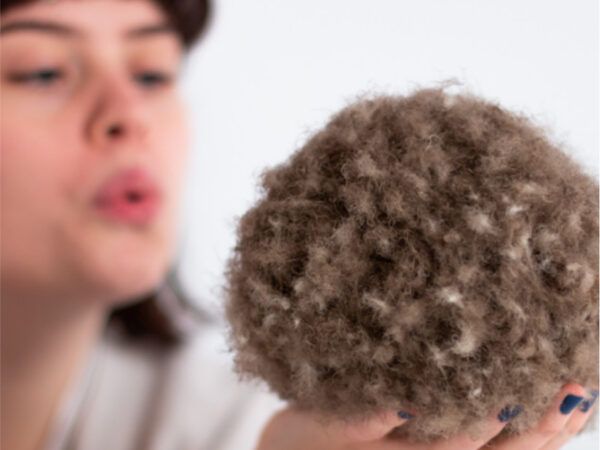From Bird to Bed – The Complete Story of Our Eiderdown
The story behind Icelandic Down is (almost) worthy of the Icelandic sagas. Sustainably farmed in the wild fjords of Iceland and meticulously handcrafted, our products follow a 1000-year-old legacy of traditional eiderdown production.
The sheer quantity of work, craftsmanship, care and, importantly, passion that goes into every duvet we create is matchless.
This article offers an in-depth look ‘behind the scenes’ of our entire process - from the raw eiderdown we gather to the duvet that warms your bed.
One of our eider duck sanctuaries lies in the remote fjord of Lodmundarfjordur

The story begins with Oli and Johanna, two dedicated eider duck farmers. Every May, they set sail for Lodmundarfjordur - a jaw-dropping fjord in eastern Iceland. The mountain road leading to the fjord is still buried under snow in late spring, making it completely inaccessible - except by boat.
There, Oli and Johanna have maintained an eider duck farm since 2001. They’ve provided the birds with a safe sanctuary and sustainably collecting their down. Thanks to their effort, the farm’s nest population has grown from one thousand to over six thousand today.
When they arrive, they immediately start preparing the site for nesting. Over the course of two weeks, they create 100-250 new nests, repair fences to keep out the foxes, and raise hundreds of colorful flags that encourage the eider ducks to settle on the farm (and scare off predatory seagulls).
They go about their work completely isolated from civilization - in fact, there’s no modern electricity (just a diesel motor and solar panel). The house takes two days to warm up with a wood-fired stove, which also serves for cooking. And on the rare occasion that they receive a visitor, they often arrive by snowmobile!
During their two months at Lodmundarfjordur, it’s a frenzy of activity. Once the birds arrive, Oli and Johanna are constantly creating and fixing nests, mending fences, and keeping watch night and day to protect the eider ducks from predators like foxes, seagulls, and minks. Despite the hard work, they cherish this time of year - even after two decades of doing it.
When the eider ducks finally return to the sea, Oli and Johanna collect the reward for their hard work - eiderdown.
Collecting and cleaning eiderdown is a labour of love

Eiderdown farming is one of the most sustainable, animal-friendly practices imaginable. When the ducks abandon their nests and leave their man-made sanctuary, they naturally leave behind their precious eiderdown. If it weren’t for Oli and Johanna, the soft, featherless material would simply be carried away by the wind and the birds would be left vulnerable to predators, potentially facing extinction.
The farmers collect the eiderdown from each nest by hand - a process that takes several days. It requires the down from 50-70 nests just to fill a single-sized duvet!
Once the eiderdown has been collected, it’s time for cleaning, which is a lengthy, seven-step process:
- Drying - First, the eiderdown is dried on special metal racks both in house and outside in the sun.
- Sterilization - The down is heated in a custom-built Icelandic oven for 12-48 hours to kill any invertebrates.
- Machine Cleaning - A special tumbling machine (invented in Iceland some 70 years ago!)separates the down from the majority of straw and dirt.
- Defeathering - Another machine removes 95% of feathers or quills to leave only the purest, softest eiderdown.
- Machine Washing - The down is machine-washed using a special, down-proof soap to preserve its quality.
- Hand Cleaning - Finally the down is inspected and cleaned by hand - which can take 10-32 hours per kg of eiderdown!
- Quality Inspection - Once thoroughly cleaned and sorted, the eiderdown is checked, approved and certified by an inspector from the Icelandic Government (that’s how important eiderdown is in Iceland!).
The Icelandic Down team takes on the final hand-cleaning of the eiderdown, often sharing stories or listening to the radio as they work. “It’s like a ritual...it’s meditative.” says Ragna. “And sometimes Oli joins us, sharing his fascinating stories about the eider ducks and the past, so we’re never bored!”
Once the nesting season ends and the eiderdown has been dried and stored, Oli and Johanna say goodbye to the eider ducks and the farm that has been their world for two months. They return to the nearby town of Borgarfjordur eystri and count down the months until next year's eiderdown season.
The final product is tailored to every customer’s preferences

The production of each eiderdown duvet or comforter is done with meticulous attention to detail. We use the finest-quality German-made, down-proof cotton sateen with a 475 thread count or silk with a 442-thread count. The eiderdown is filled into 24-130 individual baffle-box compartments using an air gun. This ensures a perfectly even distribution.
Once filled, the duvet is securely stitched closed - making sure to leave no detail unnoticed and no thread unstitched. Afterward, the duvet is shaken and clapped to settle perfectly within the casing.
Finally, it's ready for delivery. We carefully pack each duvet into our beautifully-branded Icelandic Down bags, including a certificate from the Icelandic Government verifying the authenticity and quality of our eiderdown.
Every single one of our products is made-to-order here in the town of Borgarfjordur eystri. This means they’re individually-tailored to our customers needs - we never mass-produce anything. This approach sets Icelandic Down apart in two ways:
Made to fit each customer’s needs - We tailor nearly everything - including dimensions, fill weight, and cover material of our duvets. This means our customers receive a product that’s uniquely made for them and their preferences.
Exceptional quality and attention to detail - Our entire process - from collecting the eiderdown to stitching each thread by hand, allows us to ensure a level of quality that surpasses most manufacturers.
Day in, day out, we’re inspired by the fascinating birds we work with and the magical eiderdown they produce. We’d be delighted to share that same enthusiasm with you. If you’d like to learn more, feel free to reach out. You’ll be in direct contact with Ragna, our founder.


For similar stories
Join the newsletter.
Discover what makes our bedding truly special— bespoke craftsmanship, sustainable traditions, and our wonderful eiderdown.
Plus, 15% off your first order.